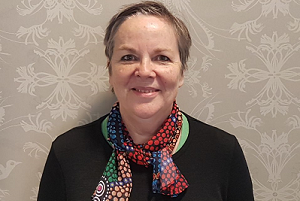We truly are living in unprecedented times. The rapidly evolving situation with COVID-19 is unpredictable and beyond our control. The shattering impact the protective measures are having on many of our professional and personal lives and the constant stream of more bad news makes it hard to think about anything else and it is easy to become obsessed, stressed, anxious and depressed.
The one thing we do have control of is deciding how we will personally respond – and this is where practising mindfulness can really help.
What is mindfulness?
According to Dr Grant Blashki, GP and Beyond Blue’s lead Clinical Advisor, mindfulness “is the practice of being in the present moment, knowing where your mind’s attention is and learning to keep your attention where you want it to be.”
“It also often involves stepping back from one’s own strong emotional reactions to life’s challenges, and seeing things more objectively, without getting entangled and swept up in the feelings.”
Mindfulness doesn’t eliminate stress or other difficulties. However, by becoming aware of unpleasant thoughts and emotions that arise because of challenging situations, we have more choice in how to handle them in the moment. This gives us a better chance of reacting calmly and empathetically when faced with stress or challenges.
Mindfulness is a practical tool to help you move beyond your immediate emotional reactions and have real conversations, real impact and effect real change.
Practicing mindfulness will increase your calm appreciation of the things that really matter. This will help you to observe yourself and know yourself and be kinder to the people around you who are also suffering.
Meditation is the training ground for learning mindfulness. At first, we meditate to become familiar with the here and now for a limited period of time.
Over time, however, regularly practicing mindfulness helps us get better at calming the mind and keeping things in perspective.
Simple Mindfulness Exercises
To get started on your mindfulness journey, here are five simple exercises suggested by counsellor and psychotherapist, Leonie Stuart Weeks.
1.Yawn and stretch for 10 seconds every hour.
Do a fake yawn if you have to. That will trigger real ones. Say “ahh” as you exhale. Notice how a yawn interrupts your thoughts and feelings. This brings you into the present.
Then stretch really, really slowly for at least 10 seconds. Notice any tightness and say “ease” or just say hello to that place (being mindful — noticing without judgment). Take another 20 seconds to notice and then get back to what you were doing.
2. Stroke your hands.
Lower or close your eyes. Take the index finger of your right hand and slowly move it up and down on the outside of your fingers. Once you have mindfully stroked your left hand, swap and let your left hand stroke the fingers of your right hand. |
3. Clench your fist and breathe into your fingers.
Position your fingers and thumbs facing down. Now clench your fist tightly. Turn your hand over so your fingers and thumbs are facing up and breathe into your fist. Notice what happens.
4. S.T.O.P.
Stand up and breathe. Feel your connection to the earth.
Tune in to your body. Lower your gaze. Scan your body and notice physical sensations or emotions. Discharge any unpleasant sensations, emotions or feelings on the out breath. Notice any pleasant ones and let them fill you up on the in breath.
Observe. Lift your eyes and take in your surroundings. Observe something in your environment that is pleasant and be grateful for it and its beauty.
Possibility. Ask yourself what is possible or what is new or what is a forward step.
If you find yourself being reactive, try the following steps:
Pause and take one to three big breaths.
Say “step back.” ( You don’t have to physically step back, you can just do it in your mind.)
Say “clear head.”
Say “calm body.”
Breathe again. Say “relax,” “melt” or “ease.”
5. Mindful breathing for one minute.
Lower your eyes and notice where you feel your breath. That might be the air going in and out at your nostrils or the rise and fall of your chest or stomach. If you can’t feel anything, place your hand on your stomach and notice how your hand gently rises and falls with your breath. If you like, you can just lengthen the in breath and the out breath or just breathe naturally. Your body knows how to breathe.
Focus on your breath. When your mind wanders, as it will do, just bring your attention back to your breath. You might like to say ‘thinking’ when you notice your thoughts and just gently shepherd your attention back to your breath.
This can be done for longer than one minute. However, even for one minute it will allow you to pause and be in the moment. Or you might just like to breathe out stress on the out breath and breathe in peace on the in breath.
Mindfulness Resources
Here are some gurus from the mindfulness field. We encourage you to look them up, read their books, be inspired by them:
- Download free Apps for your smartphone that teach you more about mindfulness and meditation. ‘Smiling Mind’ and ‘HeadSpace’ are both available for Android and Apple devices, through your App stores.
- Watch the Get Some Headspace video on YouTube
- Read Work: How to find joy and meaning in each hour of the day by Thich Nhat Hanh (2017) – A practical and realistic guide to being mindful every day, even when you are under pressure.
- Read The Happiness Track by Emma Sappälä (2016) – Latest research and advice on thriving in your profession and staying true to yourself, including focusing on the present and finding calm.
- Read The Mindful Path to Self-Compassion: Freeing Yourself from Destructive Thoughts and Emotions by Christopher Germer (2009) – Learn to be kind to yourself!
Finally, you might also like to consider running Mooski, Worklogic’s online team training program to help build mindfulness, resilience and adapability for your team during these troubled times, when many staff are working remotely for the first time and can be feeling isolated.
Mooski is a delightful online team building experience where colleagues get to know each other better and reflect on their own individual traits, values, strengths and work relationships.
About Rose Scott


As our Digital Product Manager, Rose Scott manages Mooski – Worklogic’s online team training program, based on the latest scientific thinking to boost happiness and motivation at work.
She also managers of Worklogic’s Integrity Line service and ensures that people making a workplace complaint are given a calm and secure reception.
Please contact us for an obligation-free, confidential discussion to review and refresh the policies at your workplace.
